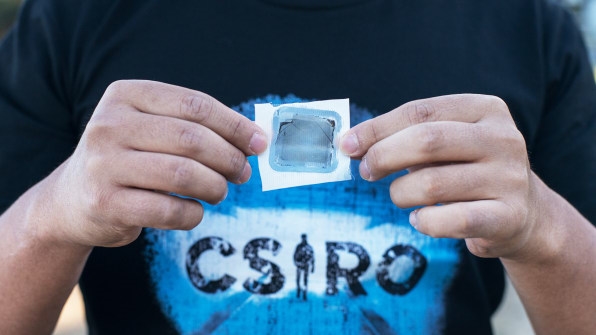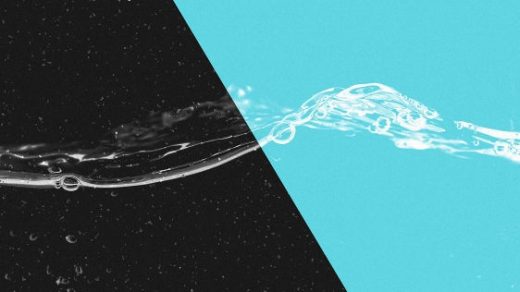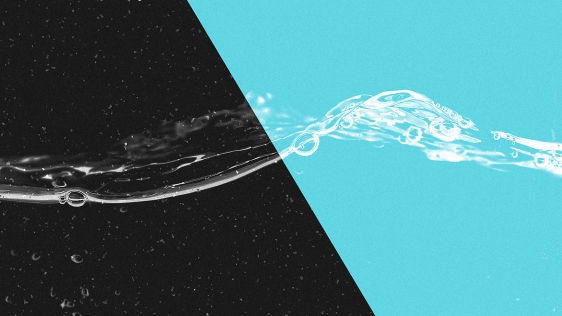This Graphene Filter Makes Dirty Saltwater Drinkable
The water in Sydney Harbor–which is salty and polluted by sewage, toxic chemicals, and microplastics–isn’t drinkable. But researchers in Australia recently tested a new type of water filter that purified and desalinated the water in a single step. The same process could potentially be used to help the 2 billion-plus people around the world who lack access to safe drinking water.
The filter uses Graphair, a type of graphene, a material made from a thin layer of pure carbon. A film made from the new version of the material, with microscopic nano-channels, has a “unique atomic structure where the channel only allows pure water molecules to pass through while rejecting all the bigger particles of contaminants,” says Dong Han Seo, a researcher at the Australian research organization CSIRO. Salt, oil, chemicals, and other pollutants are blocked by the filter, while water flows through.
Typical large desalination plants use reverse osmosis, an energy-hogging process that uses high-pressure pumps to force water through membranes. The graphene filter can be used with a different process called membrane distillation, which runs on a difference in temperature between the clean and dirty water.

That thermal process could run on renewable energy. “Ideally, where we would love to see this going is you’re using solar power to heat the salty, dirty water, and that drives the production of the cold, clean water,” says CSIRO researcher Adrian Murdock. “You also should be able to achieve a much greater efficiency of clean water.”
In a recent study, a Graphair-coated membrane, roughly one square inch, could produce half a liter of water a day. The researchers are working on scaling up the membrane to the size of an A5 sheet of paper; a larger size should be able to produce 50-100 liters of water a day, or possibly more. “For a household, if you had two or three of these in series, that’s a perfectly reasonable volume of water to be producing,” Murdock says.
While membrane distillation already had advantages over reverse osmosis, it also has a challenge–over time, as they’re coated with pollutants, membranes stop working. In the recent study in Australia, the researchers tested a commercially available membrane filter coated with a Graphair film. Without the film, the filtration rate dropped by half in 72 hours. A membrane with the graphene film, by contrast, keeps working even as it’s coated with oil, detergents, or other contaminants.
Graphene filters also work more quickly, because the properties of the material increase the flow of water, despite the nano-sized pores. “Because graphene has an affinity to water, the amount of water going through the membrane is much higher than the commercial state-of-the-art polymer membrane,” says Rahul Raveendran Nair, professor of materials physics at Manchester University in the U.K., where graphene was first invented. Nair is also working on a graphene filter that can desalinate and purify water. His team is partnering with Icon Lifesaver, a manufacturer, to develop bottles with filters that could remove pollutants, heavy metals, and viruses.
Though the research is in a relatively early stage, it could potentially be an affordable way to produce clean drinking water. The CSIRO researchers have focused on a lower-cost, faster technique for making graphene, with fewer steps than others have used in the past. Their product is also made from soybean oil, making it more sustainable than graphene made from fossil fuels. In the future, the researchers say, it could be made with waste oil.
“We are trying to build a unit so it can be easily accessible in third-world countries,” says Seo. “A membrane that can enable single-step filtration of any kind of contaminants is a first step in bringing clean water to poor countries. Our team is continually researching and pushing our technology forward, eventually building our own purification system which is perfectly suited for our membrane.”
(18)














